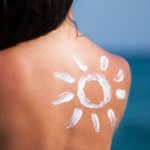The Truth About Tanning
The summer season can be especially tough on your skin due to the sun’s intense rays. Thus, keeping your skin protected will ensure you can enjoy the beautiful summer weather. This summer, you may consider working on your tan by catching some rays. But many questions about your skin may be running through your mind. How does your skin stay healthy? Is getting some color from a tanning bed so bad? Are you using the correct skin protection? While these questions aren’t exactly simple, we will attempt to scratch the surface of their answers.
Vitamin D and Ultraviolet Radiation
Did you know that approximately one in five Americans will develop skin cancer in their lifetime? The Skin Care Foundation reports that tanning may attract harmful ultraviolet radiation. Whether tanning from the sun or tanning lamps, both can cause severe skin damage. But one shouldn’t be completely put off by these warnings. While the sun can harm your skin, it also provides vitamin D. Experts also link vitamin D to improved bone and heart health. The key lies in moderation.
Some experts recommend receiving your daily dose of vitamin D from the sun. These experts say that 2-10 minutes outside every day, in the natural sun without sun protection, will help your body to produce vitamin D. Meanwhile, the director of the melanoma program at Massachusetts General Hospital believes differently. Dr. David E. Fisher believes that it is unnecessary to expose yourself to UV radiation when you can get your vitamin D through a pill or food such as milk. In fact, UV radiation can be quite harmful to your skin because it can lead to skin aging, wrinkles, and brown spots as well as cancer.
The Risk of Melanoma
According to the Skin Care Foundation, an estimated 6,380 men and 3,350 women in the U.S. will die from melanoma in 2017. Whether tanning indoors or outdoors, you still run the risk of contracting melanoma. The Society for Melanoma Research illustrates correlations between ultraviolet exposure and increased risks of Melanoma. If you have a history of melanoma doctors strongly advise against tanning indoors. In actuality, you may increase your chances of contracting Melanoma. According to 19 published studies in the International Journal of Cancer, the use of tanning beds before age 35 boosts the risk of melanoma by 75%. The Mayo Clinic Staff says that limiting your exposure to UV radiation can help reduce your risk of melanoma.
Using sunscreen, when exposing to the sun outside, can protect your skin from becoming severely damaged by sun exposure. Keep in mind that not even sunscreen cannot block all ultraviolet rays; however, you should still use it when possible.
Melanoma Symptoms and the Importance of Early Detection
Knowing the warning signs of melanoma can help protect your skin. If you recognize the warning signs of skin cancer, you can stop the cancerous changes before it has the chance to spread through your body.
Make sure you pay attention to any new or changing moles on your body! The average person has between 10 and 45 moles, which differ from Melanoma. These normal moles usually have a diameter that is smaller than 1/4 of an inch. One of the symptoms of melanoma involves a mole changing in the color or size. Another symptom is a new, unusual-looking, or pigmented growth on your skin. Some hidden melanomas may appear under your nails or even in your eyes, which can be more dangerous and harder to spot.
Early detection can help dermatologists treat Melanoma cases successfully, and prevent it from spreading. If you live in North Jersey and would like more information about tanning or skin health, contact the experts at Short Hills Dermatology today.





